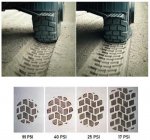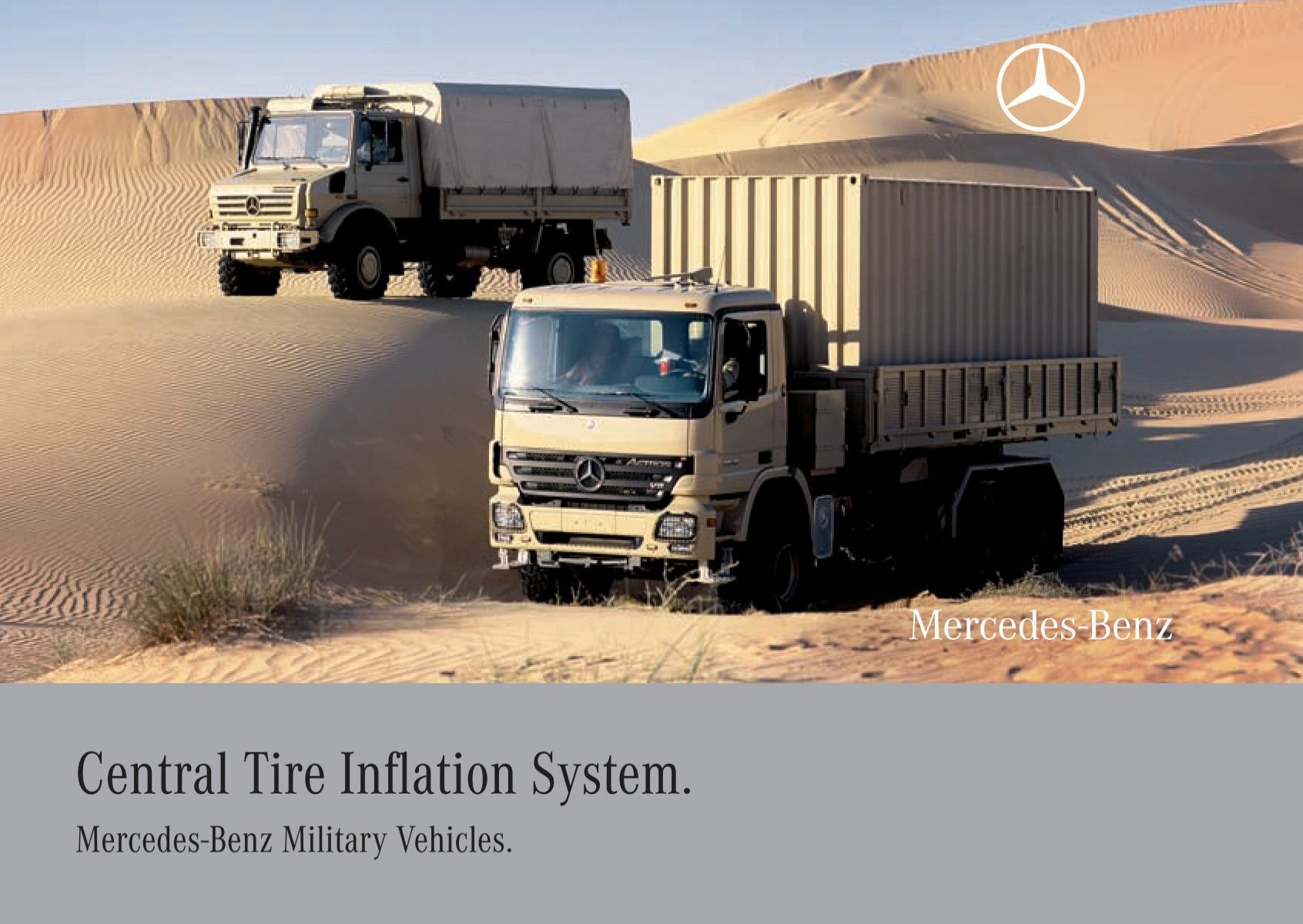While I am sure there is a dusty document somewhere that contains a nice chart of the data you are seeking, I am sorry to say I do not have it. But, if you do not require precise numbers it is easy to calculate some estimates.
Ground Pressure(PSI) = Weight of vehicle/Tire surface contact area in Square inches
Do not confuse Ground pressure with Tire pressure. Both are measure in the same units (PSI).
Weight of the vehicle is pretty easy to estimate based on the data plate and estimate your load weight.
Tire surface contact area can be a little more challenging to estimate. It will change based on the tire pressure and the surface conditions. On softer ground the tire will sink in a little and cause an increase in surface area in contact with the ground. This increase in surface area will decrease the ground pressure even though the weight of the vehicle remains the same.
If we assume the width of the tire in contact with the ground is 15 inches and the length of the contact area is 16 inches then 15in x 16in = 240in^2 for 1 tire.
Lets assume all the tires have equal contact area. Multiply the number of tires by 240. Lets say it is an LMTV with 4 tires. 4 tires x 240in^2 = 960in^2
Lets assume the vehicle has a small load on it and the total weight of the vehicle is 20,000lbs.
20,000lbs / 960in^2 = 20.8 pounds per square inch.
If the ground is a little soft and the tires sink into the ground slightly. Then you need to recalculate the tire surface contact area. Lets assume the tire width remains the same at 15 inches but the length increases from 16 inches to 18 inches and the loaded truck weight has stayed the same at 20,000lbs.
15in x 18in x 4 tires = 1080in^2
20,000lbs / 1080in^2 = 18.5 pounds per square inch
If you reduce the tire pressure using CTIS you will also increase the tire surface area and decrease ground pressure.
The numbers are not very useful unless you have something to compare.
| Object | Ground pressure (kPa) | (psi) |
|---|
| Hovercraft | 0.7 kPa | 0.1 psi |
| Human on snowshoes | 3.5 | 0.5 |
| Rubber-tracked ATV | 5.165 | 0.75 |
| Wheeled ATV | 13.8 | 2 |
| Diedrich D-50 – T2 drilling rig | 26.2 | 3.8 |
| Human male | 55 | 8 |
| M1 Abrams tank | 103 | 15 |
| 1993 Toyota 4Runner / Hilux Surf | 170 | 25 |
| Adult horse (550 kg, 1250 lb) | 170 | 25 |
| Bagger 288 excavation machine | 170 | 25 |
| Passenger car | 205 | 30 |
| Adult elephant | 240 | 35 |
| Mountain Bicycle | 245 | 40 |
| Road racing bicycle | 620 | 90 |
| Stiletto heel | 3,250 | 471 |
I can tell you from experience, I have driven my loaded LMTV across a muddy area without sinking in more than 2 inches and never spun a tire. If I had driven my 4x4 F550 dump truck that weighs 10,000 lbs empty across that same mud I would have been badly stuck.
I have also driven in deep snow up to 40" deep and not even come close to getting stuck. In snow, you have to watch the snow conditions. Traction is best when it it well below freezing. I like it best when it is below 20F, sub zero is even better.
I have driven on muddy roads and driveways and I leave less of a rut than a car or light pickup truck. I have used the LMTV to flatten out rutted driveways with the wide tires. Under the right conditions it can do a pretty good job.
In the spring in Vermont the roads begin to thaw from the top down. So you get a layer of mud on top of frozen ground. The frost can easily reach 6 feet deep and the mud layer forms on top. Under these conditions even the best gravel can turn to into complete mush. A road that was solid one day can quickly thaw and become impassable to almost any vehicle. Vermont towns will "post" the roads in spring conditions limiting the weight of vehicles on 2 axles to 15,000lbs in an efforts to protect the roads from damage. So when a road is posted I am not supposed to drive on it with my truck even though the LMTV has less ground pressure than a car or light truck. The law was not written with high floatation tires (low ground pressure) in mind. I spoke with my town road manager and showed him the truck and he said he would not mind if I drove on the roads in the spring with the LMTV as long as I used common sense. That won't help in another town but at least it is a start. Oops, I should say for those who have not been to Vermont, we have more miles of unpaved roads than paved roads. Both, paved and unpaved roads are "posted" in spring.




